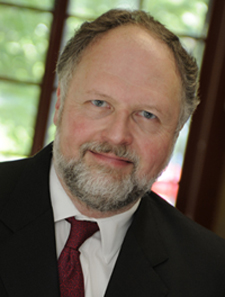Printed in the Winter 2019 issue of Quest magazine.
Citation: Smoley Richard,"From the Editor’s Desk" Quest 107:1, pg 12
 You hear it often: death is a part of life.
You hear it often: death is a part of life.
So it is. Warm life frolics, seemingly indestructible. At some point there comes a sense of apprehension, a chill in the air. The cold takes over; life grows timid and slows down. Everything withers, and soon nothing is left but a pile of leaves. All is silent and colorless. Then, just as things are at their coldest and most still, a breeze stirs. There is a warmth of hope. Things start to move and grow, and the cycle begins all over again.
I believe that anyone who does not find this fact utterly mysterious simply has not given much thought to it.
Yet none of this manages to quell the fear that nearly all of us feel before our own mortality. To say that death is a part of life is not much consolation. When I am dead, I will be gone. Does that mean my death is part of someone else’s life? What good does that do me?
We can ask, then, why we fear death. To my mind, the chief answer has to do with the body. For most of us most of the time, the body is everything. We occupy ourselves from waking to sleeping with its care and upkeep. We get upset at the slightest hint that there may be something wrong with it, and all the work we do is to sustain it.
In the end, this is useless. At best you will be able to keep your body going for a few extra years. Even if you do, you have no guarantee that these years will be pleasant or free from pain.
In short, we think we are our bodies, but ultimately our bodies do not amount to very much. Present-day society dislikes this fact and pushes aside any reminders of it. A few generations ago, people died in their beds at home (if they were lucky); the body was washed and waked in the house. Then people began to turn these duties over to the undertakers, and wakes were held in funeral homes. Today even this custom is vanishing, and it is becoming more common to dispose of the body privately and have a memorial service focusing on the bright side of the person’s life (with a cheer that always feels a bit artificial).
Nonetheless, there is no escaping the gloomy facts of death. The art of earlier centuries shoved them into people’s faces, with the medieval danse macabre and skulls and bones carved into gravestones. Bristol cathedral in England has a stone effigy of a bishop carved in the form of a half-rotten corpse.
Were the people in those times just more pessimistic than we are, or was there some reason for these dark motifs? The answer they would have given is, I believe, clear. You think you are your body, but your body will soon be gone, like it or not. So is that all you are?
Most humans across the course of time would say no. We know that we live on after death. Our concepts about the afterlife are dim and necessarily inaccurate: we can only imagine it through images based on earthly life, and yet the afterlife is, by definition, not earthly life, so it must be something different, and that something may be, probably is, beyond our current comprehension. There are all sorts of theories and accounts of the afterlife state, from the Egyptian Book of the Dead to the latest near-death experiences, but there are many things that these writings do not tell us.
Consider this: earthly life takes on manifold forms. Even in purely human terms, there is an endless number of things you can do, suffer, and become. It would stand to reason that the afterlife would be like this—perhaps more so. Hence it may be that some people, for reasons not entirely clear to us, go on to existences in other realms and dimensions, while others are born again on earth. Some shamans say that the soul consists of several parts and that these parts split up after death and go their own ways. But we have no day-to-day awareness of these parts that may survive and cannot even find them in ourselves.
We also fear death because it is the inversion of all earthly values. What is valuable on earth is not so in the eyes of death: what may survive the trauma of death is nothing that is valued or can even be seen on earth. This is an uncomfortable fact if your whole attention is focused on the world. Will you be a Democrat or a Republican after you are dead? Will you still like ice cream? One can only laugh at such questions.
Death tells us, then, that we are not our physical bodies. Nor are we our social identities or even our self-concepts as “good people.” So, then, who or what are we? Setting all perishable things aside, we do not know the most basic and important fact about ourselves. As A Course in Miracles says:
“I do not know the thing I am and therefore do not know what I am doing, where I am, or how to look upon the world or on myself.”
Yet, as the Course adds, “In this learning is salvation born.”
Richard Smoley

